Unit 6: Anticipating Patterns
Terms and Concepts
Probability: the chance of the outcome of an event
Sample space: a set of all possible outcomes
Tree diagram: representation is useful in determining the sample space for an experiment, especially if there are relatively few possible outcomes.
Basic Probability Rules and Terms
Rule 1: For any event A, the probability of A is always greater than or equal to 0 and less than or equal to 1
Rule 2: The sum of the probabilities for all possible outcomes in a sample space is always 1
Impossible event: If an event can never occur, its probability is 0
Sure event: Of an event must occur every time, its probability is 1
“Odds in favor of an event”: ratio of the probability of the occurrence of an event to the probability of the nonoccurrence of that event.
Odds in favor of an event = P(Event A occurs) / P(Event A does not occur) or P(Event A occurs) : P(Event A does not occur)
Complement: the set of all possible outcomes in a sample space that do not lead to the event
Disjoint or mutually exclusive events: events that have no outcome in common. In other words, they cannot occur together.
Union: events A and B is the set of all possible outcomes that lead to at least one of the two events A and B
Intersection: events A and B is the set of all possible outcomes that lead to both events A and B
Conditional Events: A given B is a set of outcomes for event A that occurs if B has occurred
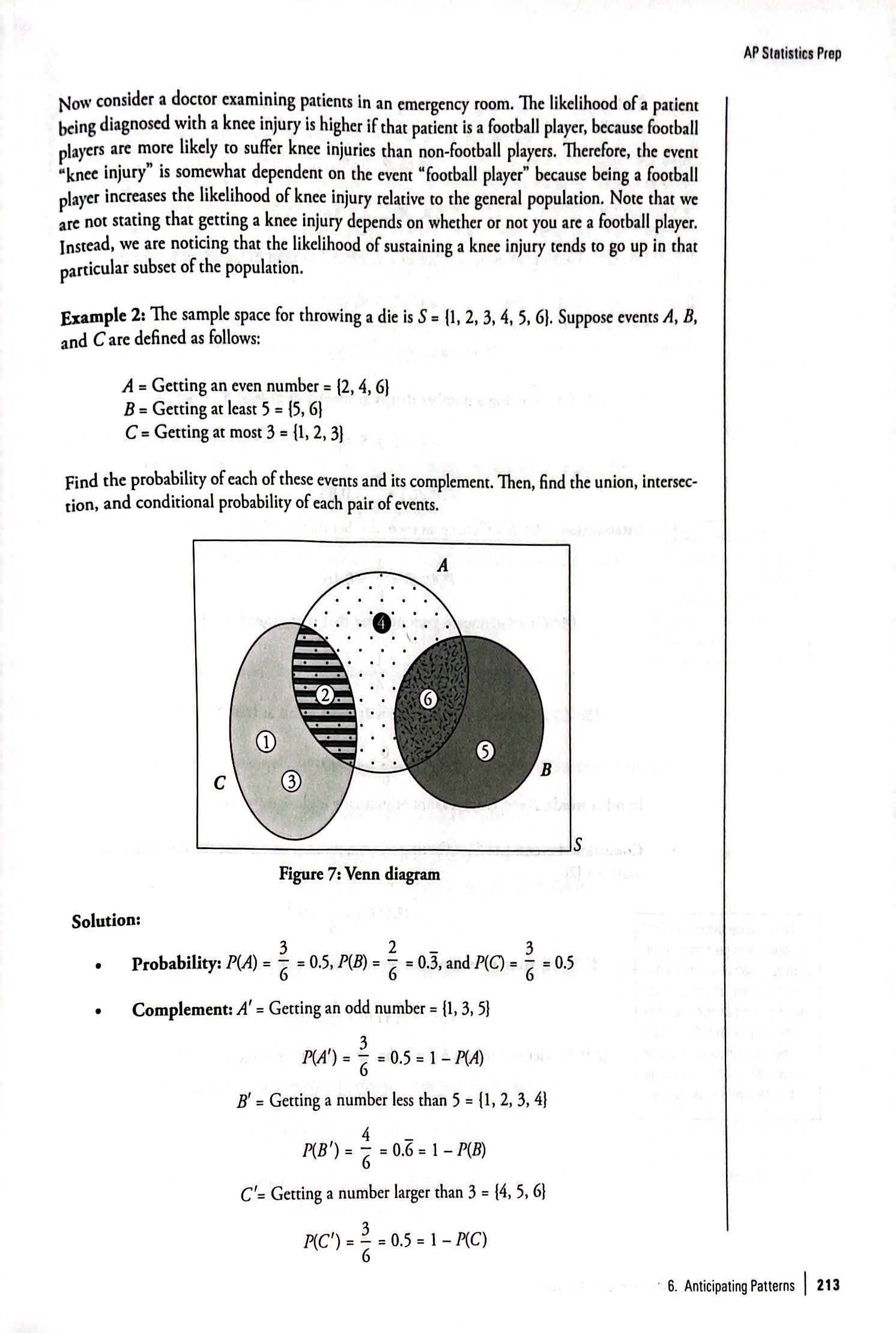
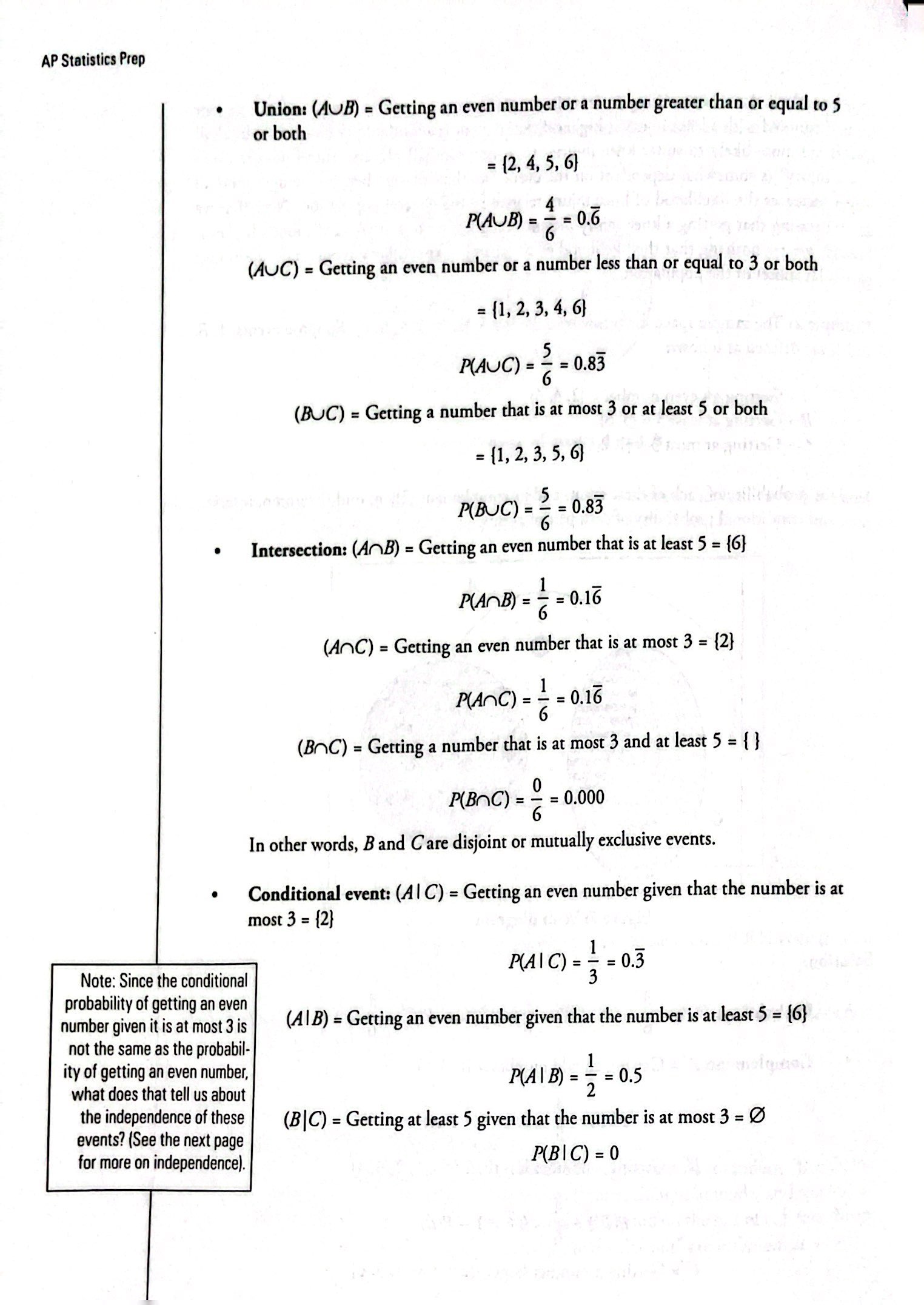
Random Variables and Their Probability Distribution
Variable: quantity whose value varies from subject to subject
Probability experiment: an experiment whose possible outcomes may be known but whose exact outcome is a random event and cannot be predicted with certainty in advance
Random variables: The outcome of a probability experiment takes a numerical value
Discrete random variable: quantitative variable that takes a countable number of values
Continuous random variable: a quantitative variable that can take all the possible values in a given range
Discrete Random Variable
Expected value: Computed by multiplying each value of the random variable by its probability and then adding over the sample space
Variance: sum of the product of squared deviation of the values of the variable from the mean and the corresponding probabilities
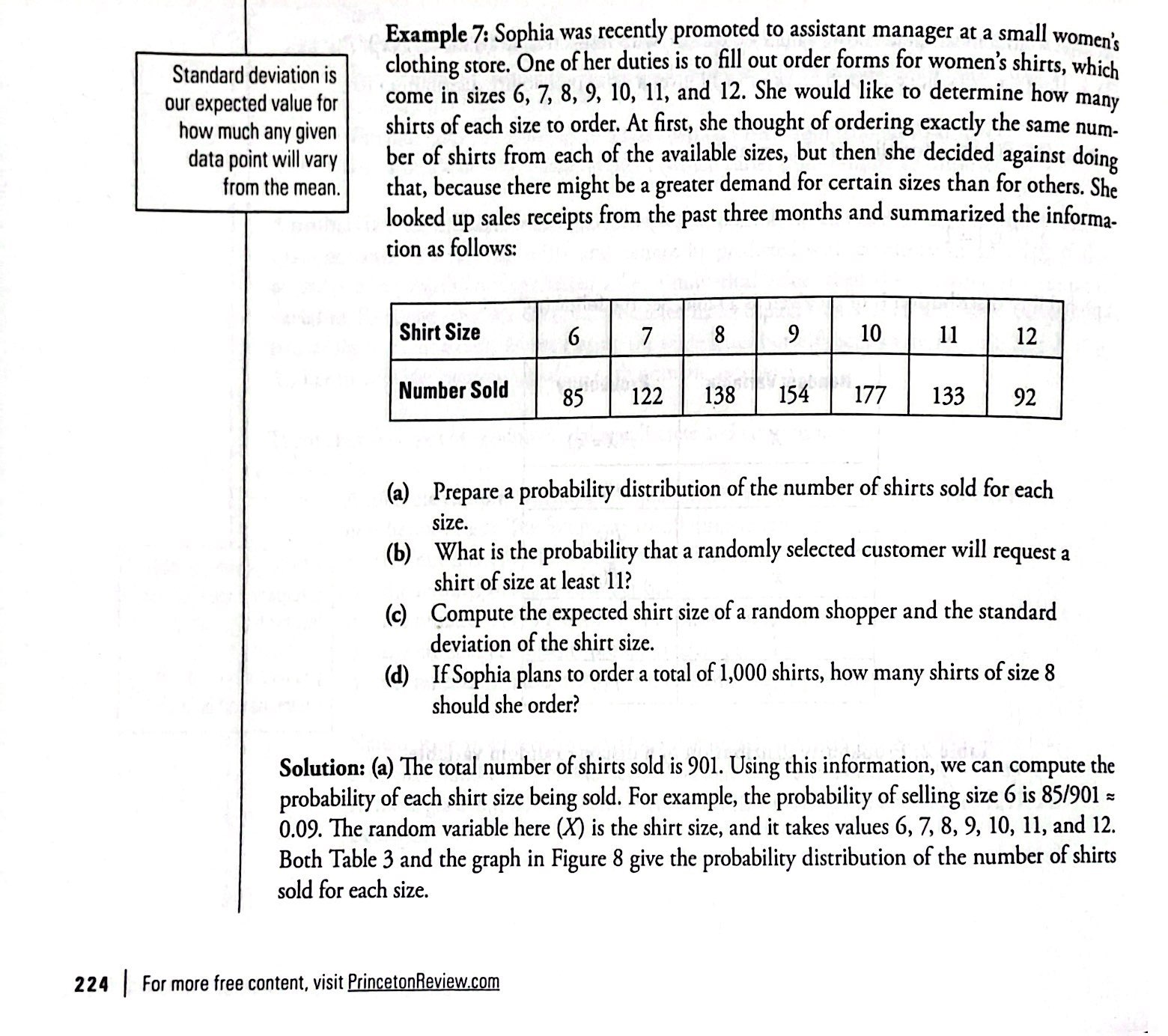
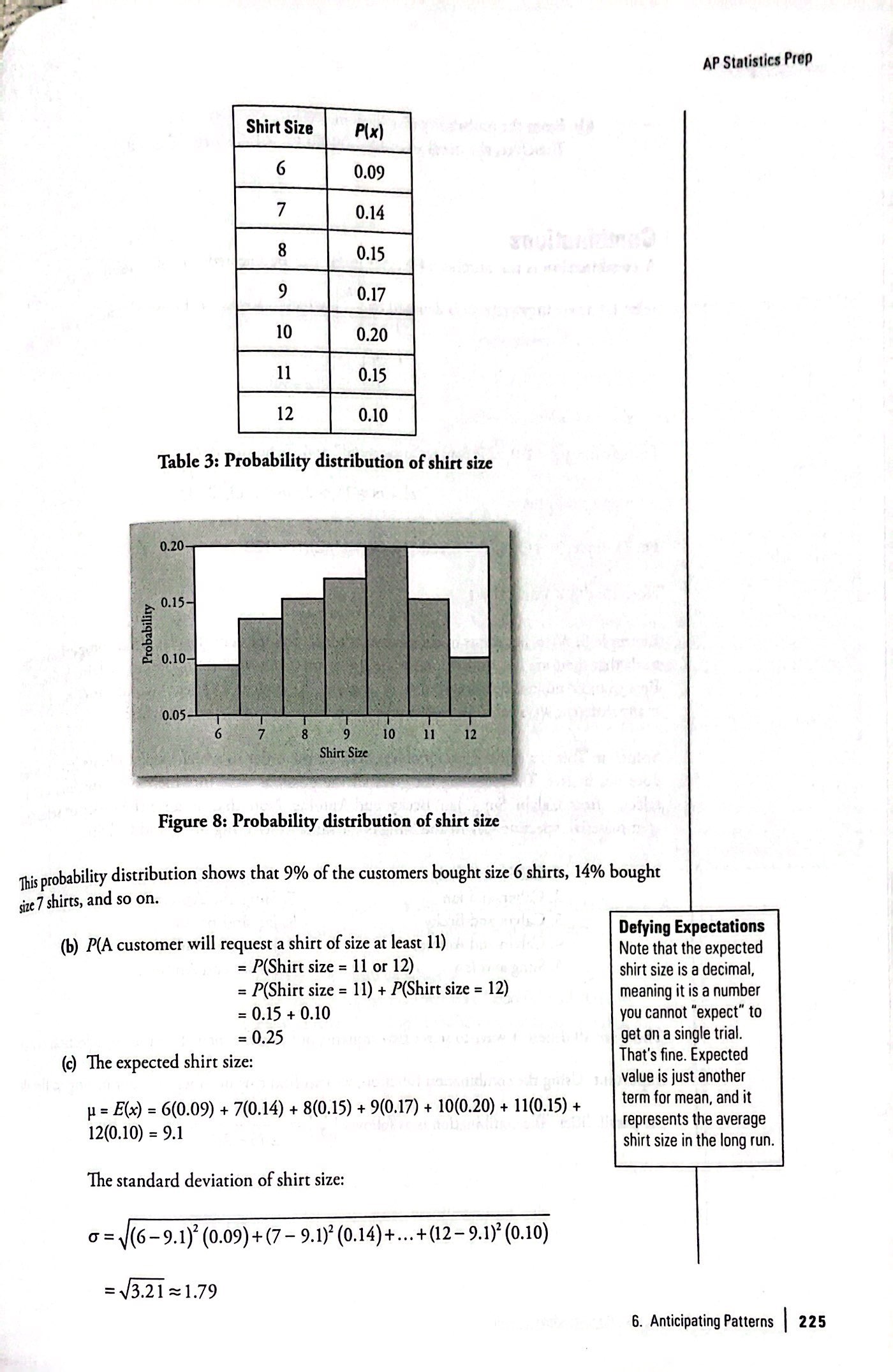

Combinations
Combination: the number of ways r items can be selected out of n items if the order of selection is not important.
Binomial Distribution
3 Characteristics of a binomial experiment
There are a fixed number of trials
There are only 2 possible outcomes
The n trials are independent and are repeated using identical conditions
Binomial probability distribution:
Mean:
μ = npVariance:
σ2 = npqStandard deviation:
σ = √npq
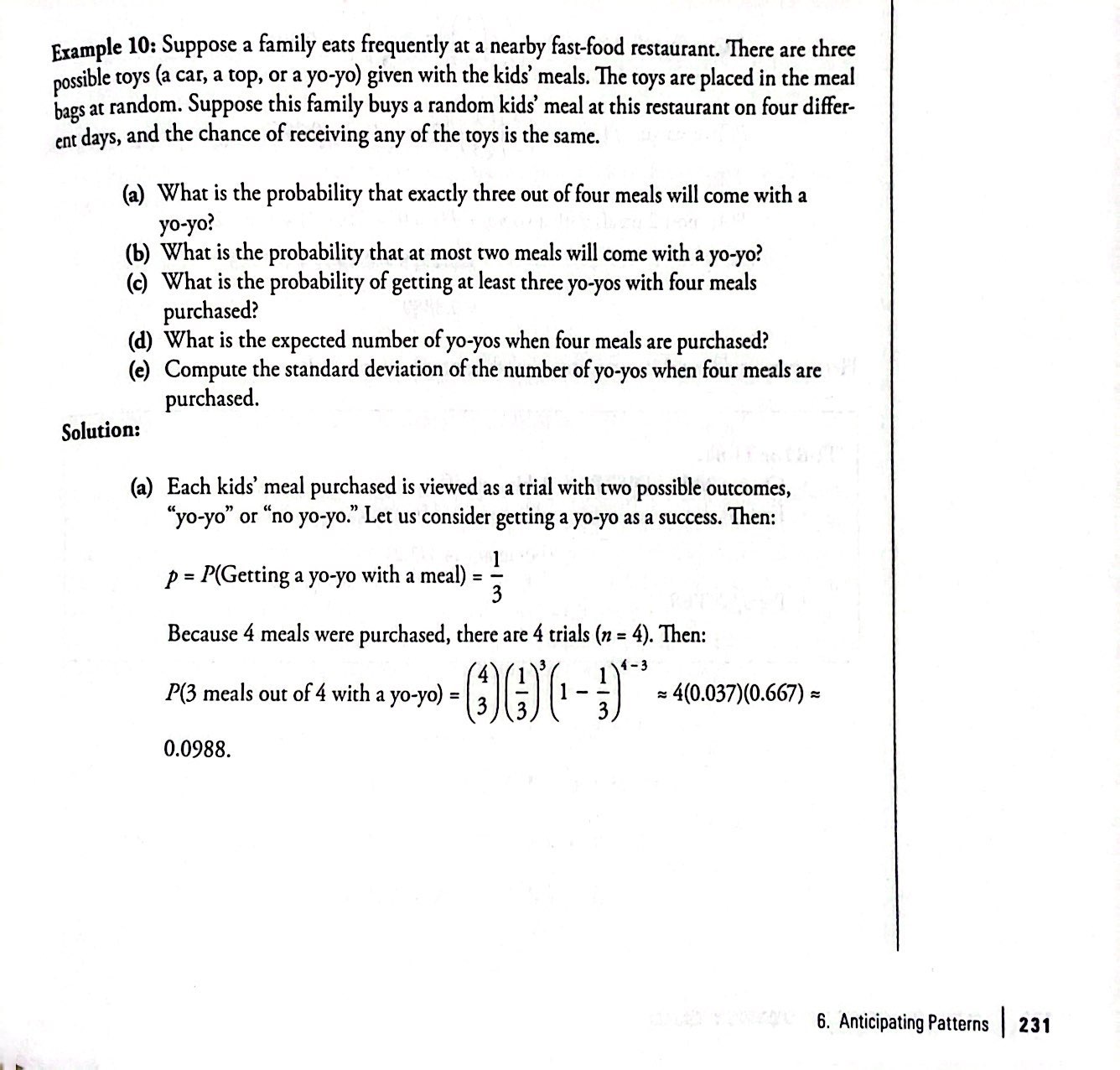
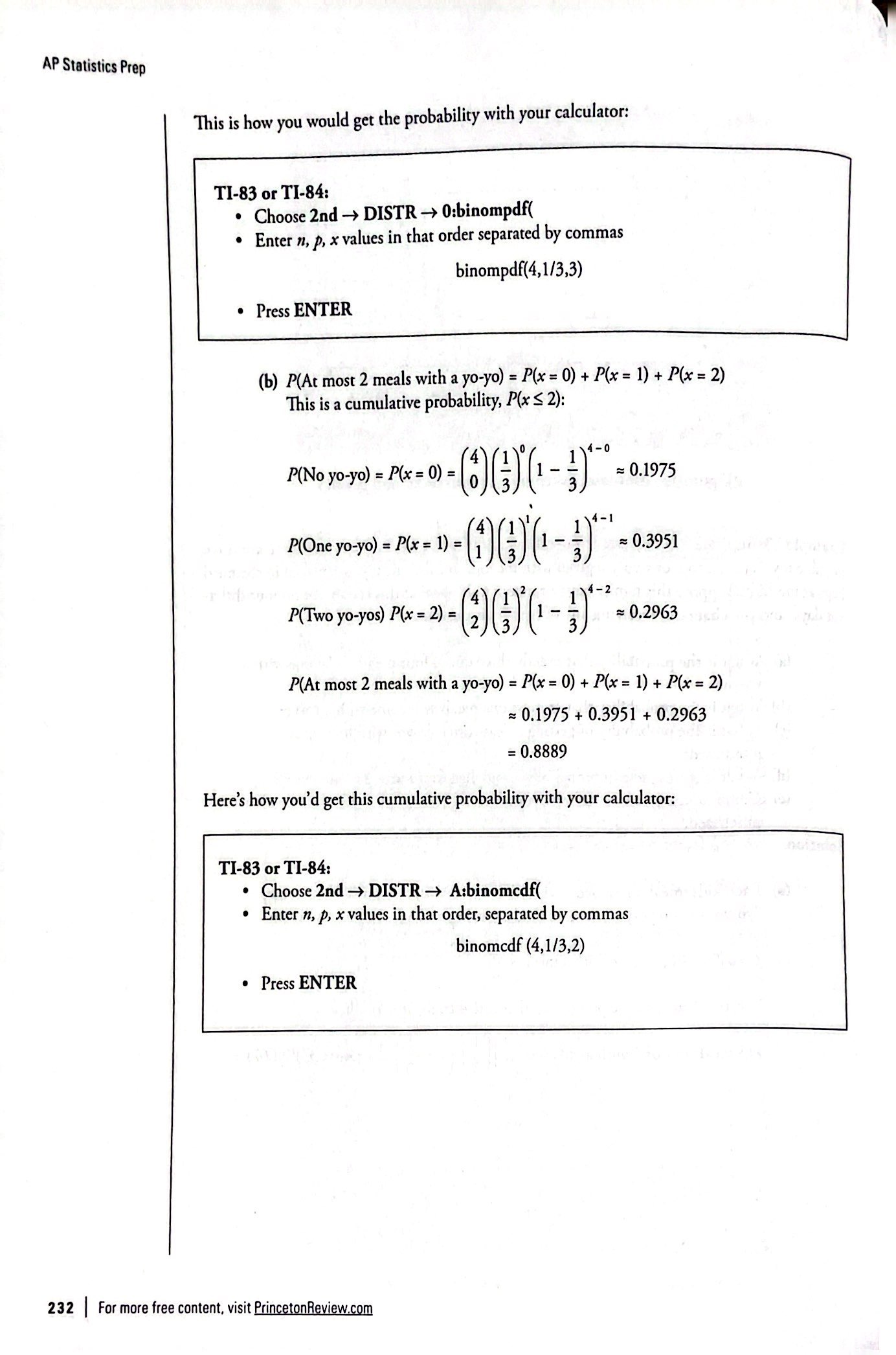
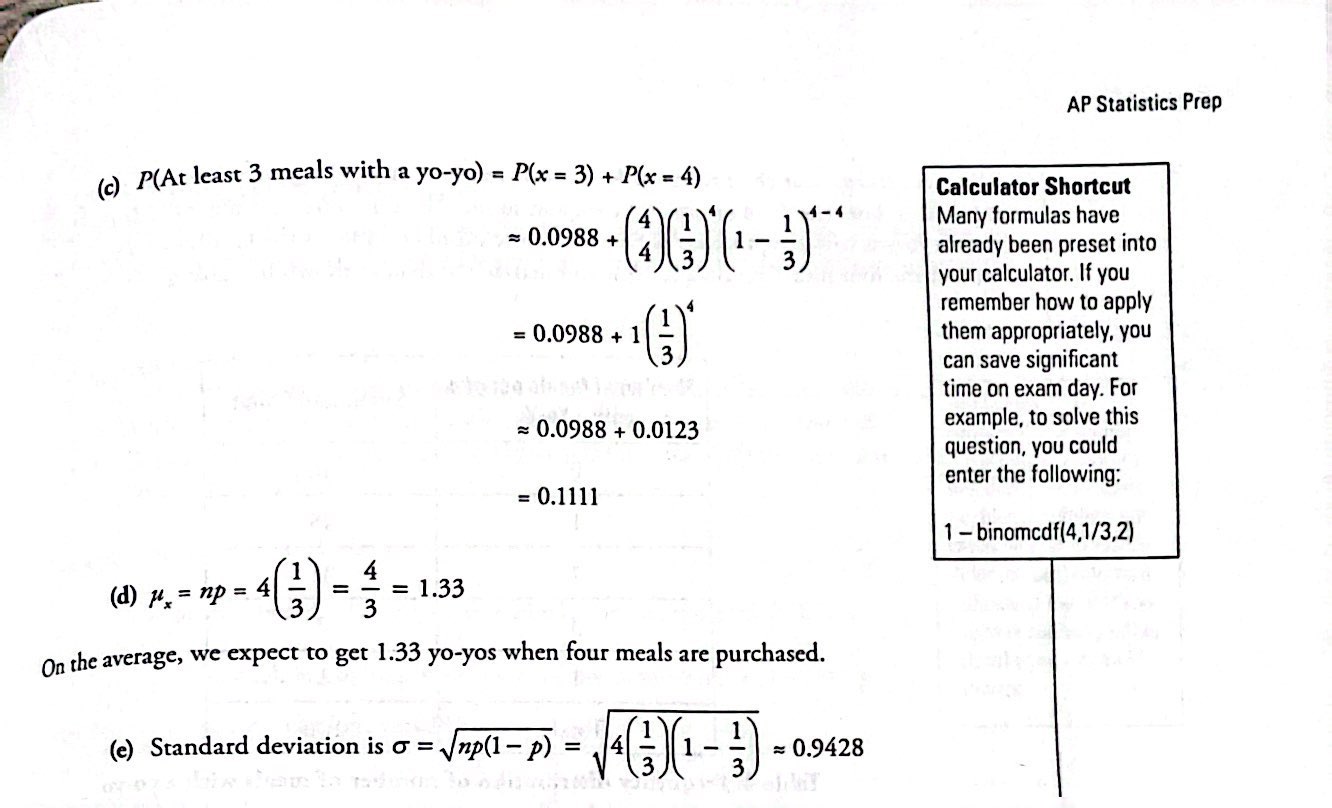
Geometric Distribution
3 Characteristics of a geometric experiment
There are one or more Bernoulli trials with all failures except the last one, which is a success. In other words, you keep repeating what you are doing until the first success.
In theory, the number of trials could go on forever. There must be at least one trial.
The probability, p, of a success and the probability, q, of a failure is the same for each trial. p + q = 1 and q = 1 − p.
X = the number of independent trials until the first success
Mean:
μ = 1/pStandard Deviation:
σ = √1/𝑝(1/𝑝−1)
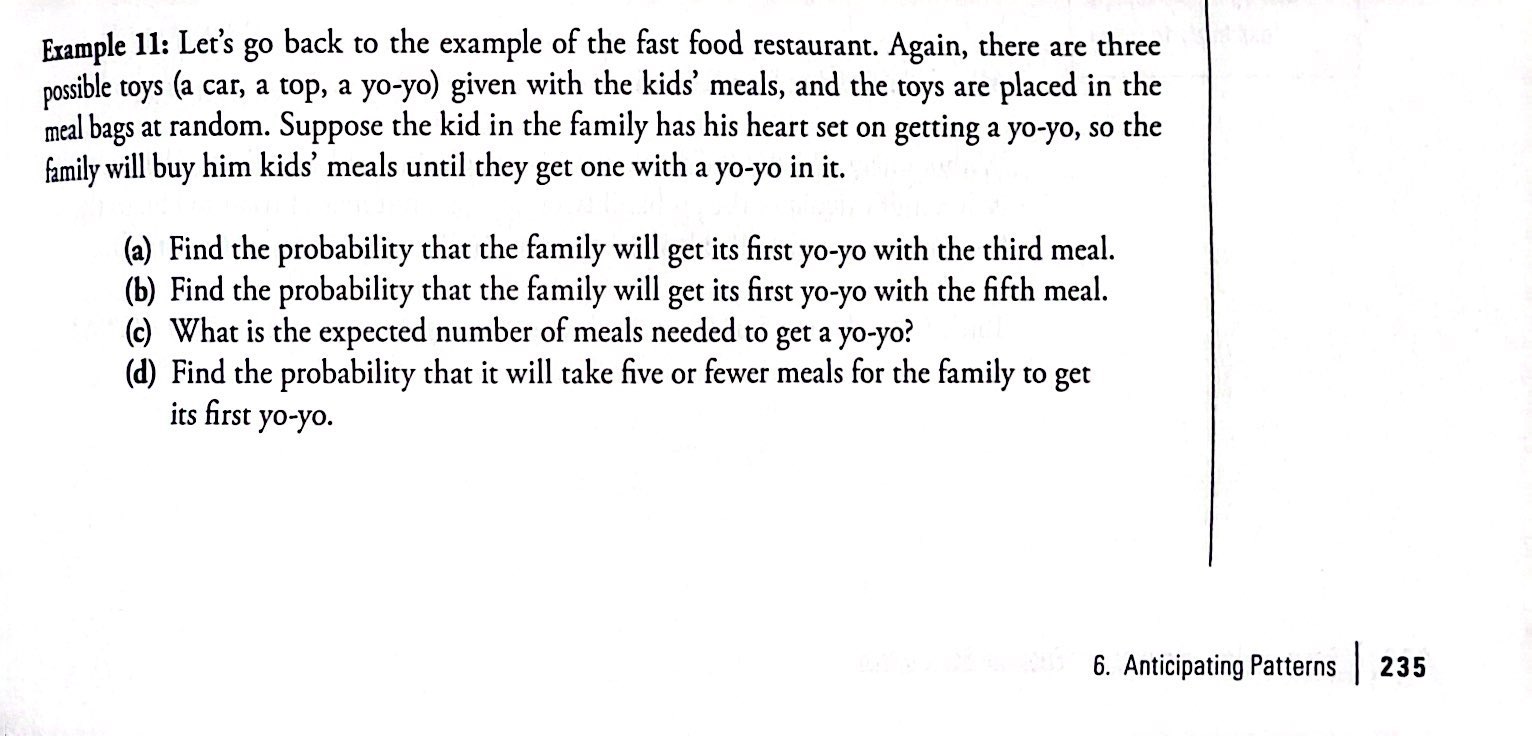
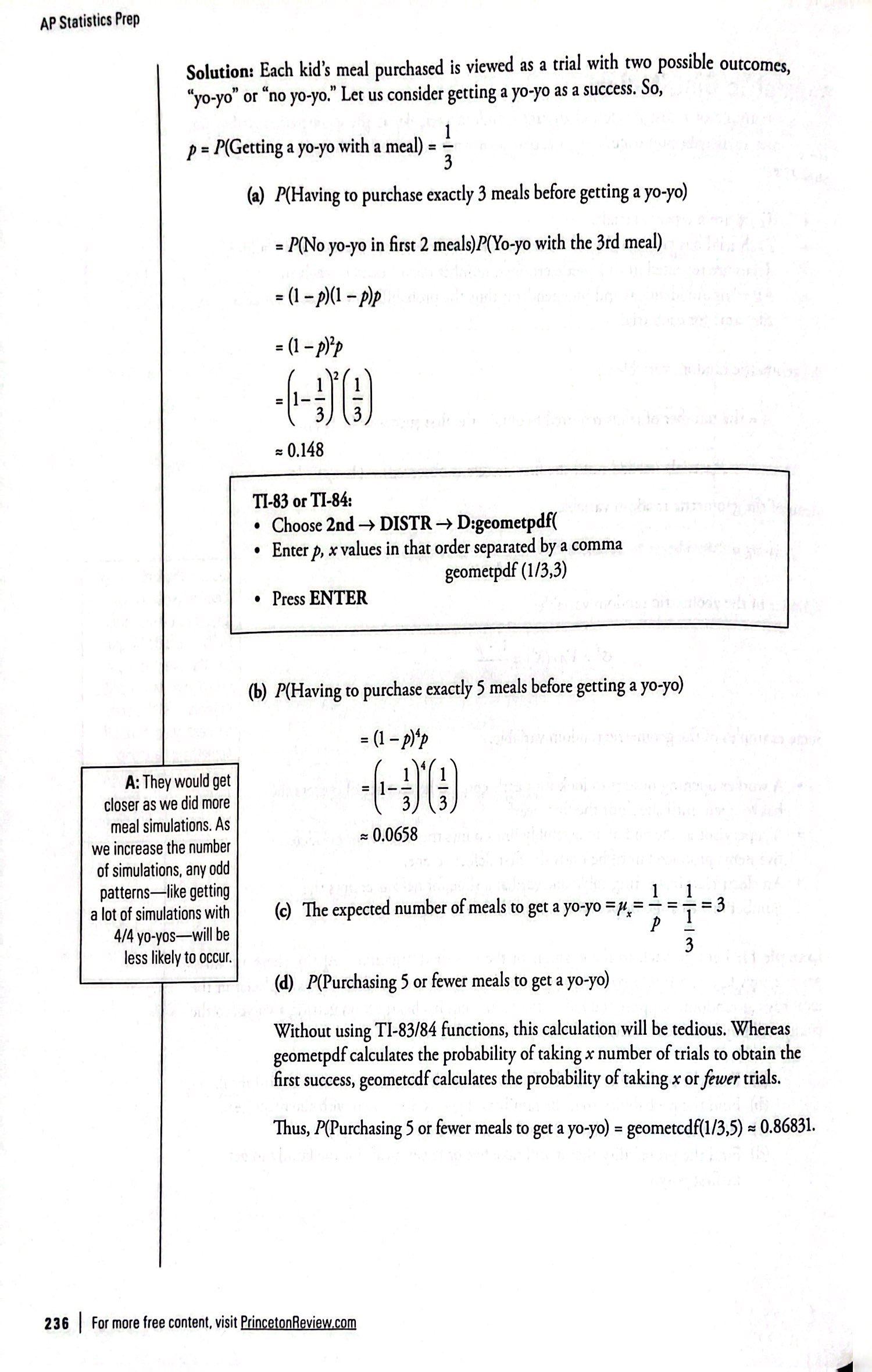
The Probability Distribution of Continuous Random Variables
The continuous probability distribution (cdf): graph or a formula giving all possible values taken by a random variable and the corresponding probabilities
Let X be a continuous random variable taking values in the range (a, b)
The area under the density curve is equal to the probability
P(L < X < U) = the area under the curve between L and U, where a ≤ L ≤ U ≤ b
The total probability under the curve = 1
The probability that X takes a specific value is equal to 0, i.e., P(X = x0) = 0
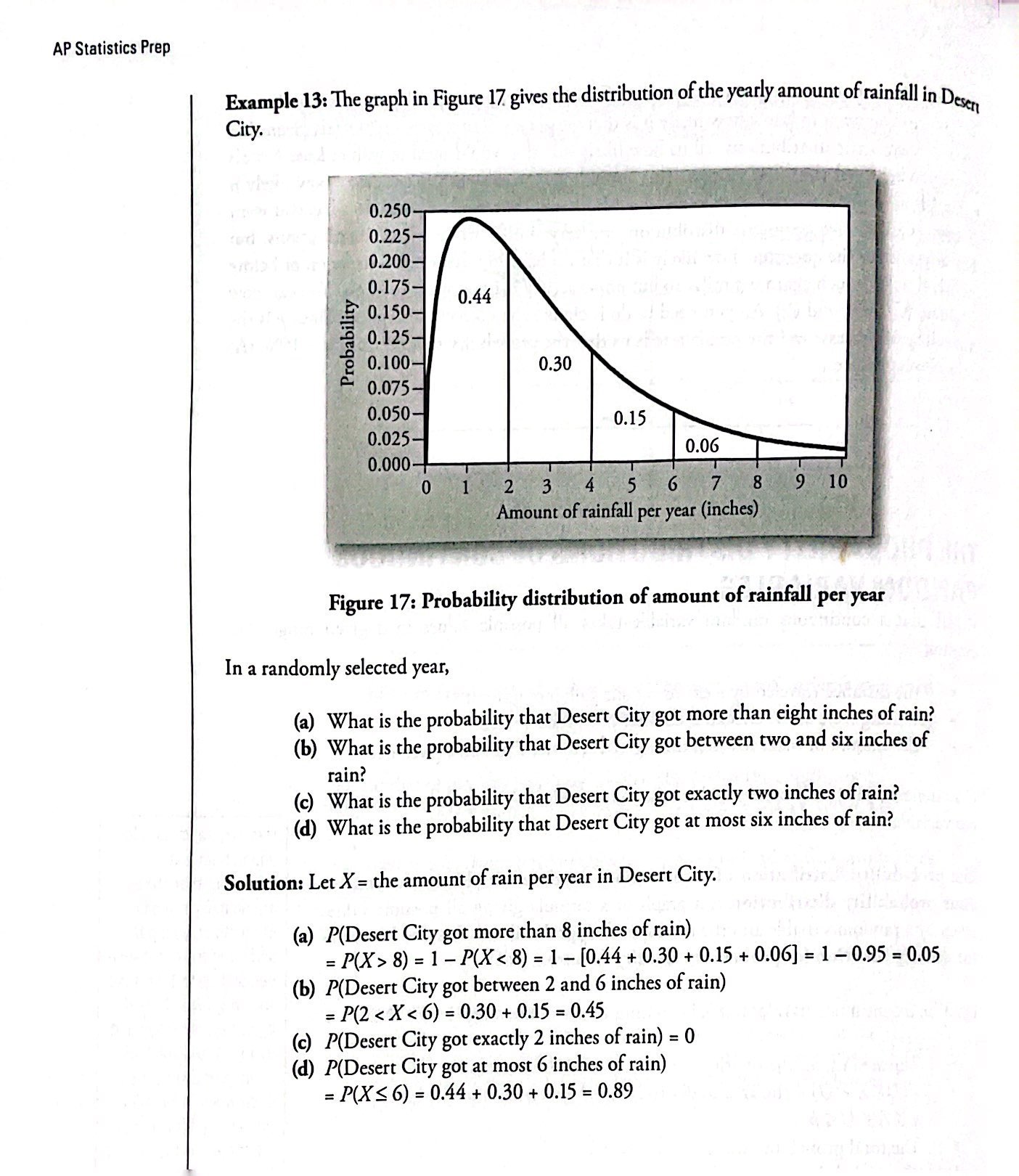
Sampling Distribution
Parameter: a numerical measurement describing some characteristic of a population.
Statistic: a numerical measurement describing some characteristic of a sample.
Sampling distribution: the probability distribution of all possible values of a statistic, different samples of the same size from the same population will result in different statistical values
Standard error: standard deviation of the distribution of the statistics.
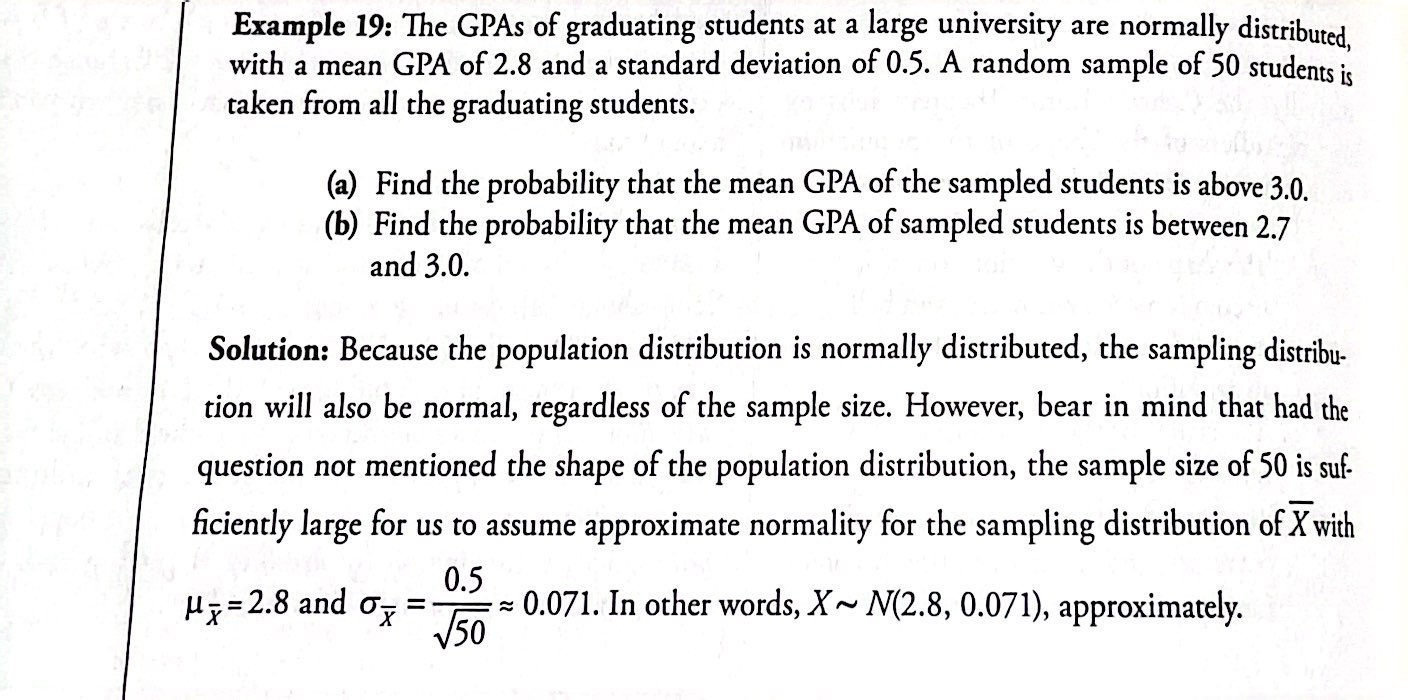
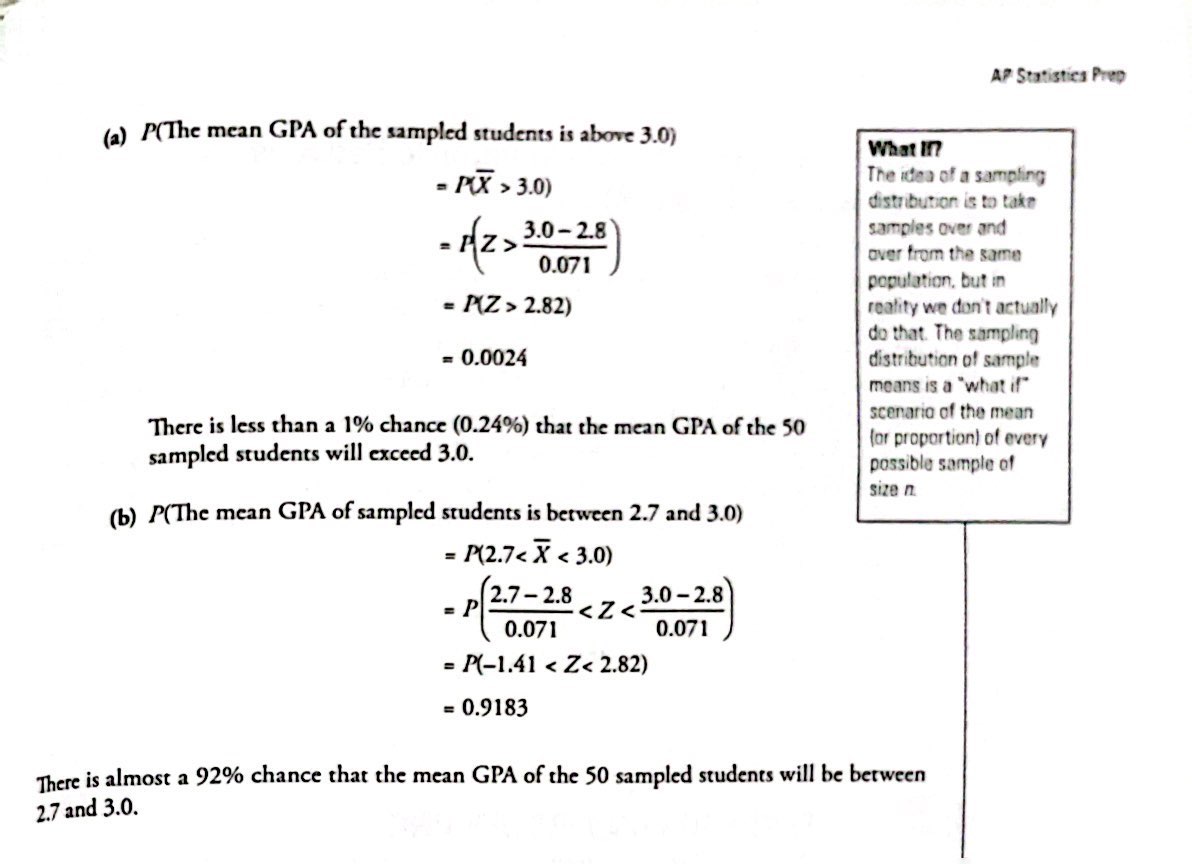
Central Limit Theorem
Central limit theorem: If the sample size is large enough then we can assume it has an approximately normal distribution.
The sample size has to be greater than 30 to assume an approximately normal distribution
The shape of the distribution of “X bar” becomes more symmetrical and bell-shaped
The center of the distribution of “X bar” remains at μ
The spread of the distribution “X bar” decreases, and the distribution becomes more peaked
Calculator Steps
Probabilities for means on the calculator
2nd DISTR
2:normalcdf
normalcdf (lower value of the area, upper value of the area, mean, standard deviation / √sample size)
where
mean is the mean of the original distribution
standard deviation is the standard deviation of the original distribution
sample size = n
Percentiles for means on the calculator
2nd DISTR
3:InvNorm
k = invNorm (area to the left of 𝑘, mean, standard deviation / √sample size)
Where→
k = the kth percentile
mean is the mean of the original distribution
standard deviation is the standard deviation of the original distribution
sample size = n
Probabilities for sums on the calculator
2nd DISTR
2: normalcdf (lower value of the area, upper value of the area, (n)(mean), (√n)(standard deviation))
where:
mean is the mean of the original distribution
standard deviation is the standard deviation of the original distribution
sample size = n
Percentiles for sums on the calculator
2nd DIStR
3:invNorm
k = invNorm (area to the left of k, (n)(mean), (√n)(standard deviation)
where:
k is the kth percentile
mean is the mean of the original distribution
standard deviation is the standard deviation of the original distribution
sample size = n
 Knowt
Knowt
